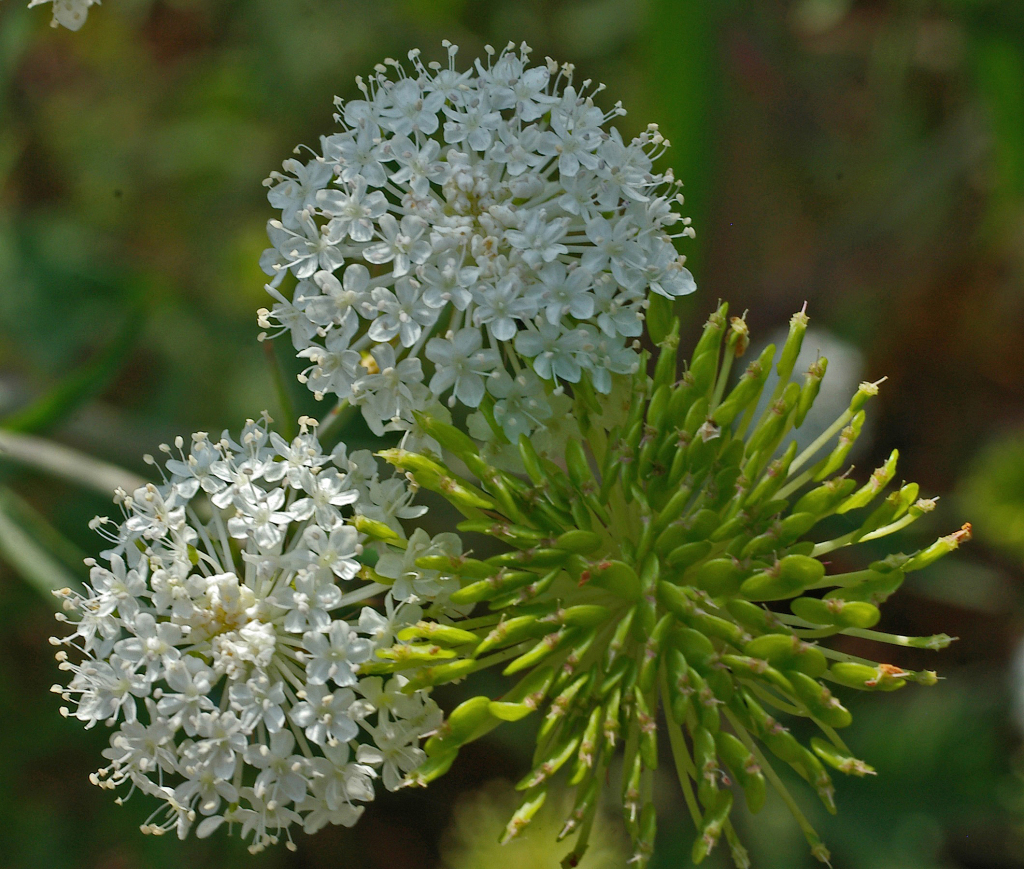Trachymene composita
(Domin) B.L.BurttErect, taprooted annual or biennial to c. 250 cm high, often glaucous. Leaves tufted at base (sometimes absent at flowering) and cauline; lamina ternately dissected, 2–15 cm diam., with toothed or lobed cuneate segments, or uppermost leaves with segments entire and oblong, surfaces variably hispid, rarely glabrous; petioles to c. 15 cm long, hispid or glabrous (but then margins of sheathing bases ciliate). Umbels usually numerous, often umbellately arranged, c. 40–200-flowered; peduncle 2–11 cm long; involucral bracts c. 18–35, subulate, 4–9 mm long, ciliate (rarely glabrous); pedicels 6–20 mm long. Petals obovate to orbicular, 1–2.5 mm long, white; stamens 1–2 mm long; styles 0.5–1.5 mm long. Mericarps 2.5–5 mm long, 2–4 mm wide, smooth, tuberculate, or rarely, hirsute, often one of some or most pairs smaller.
GleP, VVP, GipP, DunT, EGL, EGU, HSF, HNF, MonT, VAlp. Also NSW, Tas.
Trachymene glaucifolia (F. Muell.) Benth. was collected last century near the Victoria–New South Wales border from the junction of the Murray and Darling Rivers. It occurs in all other mainland States and is generally distinguished from glabrous and glaucous forms of Trachymene composita by its bluish flowers, and in the development of only 1 mericarp from each pair. Its collection from Victoria could be anticipated.
Walsh, N.G.; Borre, A. van den (1999). Trachymene. In: Walsh, N.G.; Entwisle, T.J., Flora of Victoria Vol. 4, Cornaceae to Asteraceae, pp. 283–286. Inkata Press, Melbourne.
 Spinning
Spinning
